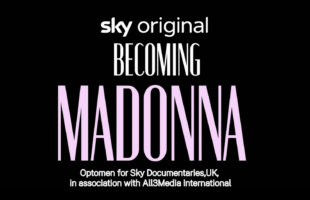
PART ONE
In the first part of the interview, Rose introduces Brightcove’s services and give examples of companies that have enjoyed their services.
Q: Where is Brightcove today and how has it been entering television space?
A: Brightcove is best known for our Video Cloud online video platform, but we’re much more than that. Brightcove provides cloud content services that help organizations of all kinds to publish and distribute professional digital media. We actually do two things:
- Deliver the world’s professional digital media; so we enable organizations like Discovery Networks, Time, Sony Pictures and PUMA to publish and distribute online video experiences on their websites and to viewers on mobile devices and connected TVs. We work with more than 6,000 brands and media companies around the world. We deliver through 94,000 websites globally, so a lot of websites have Brightcove Video Cloud videos embedded in them.
- And this is more recent; last August we acquired Zencoder, based out of California, and they do in-cloud encoding and transcoding for both video and audio. A lot of news organisations might have breaking news, sports or political content, things that need to get out very quickly – we help those companies transcode the video and audio files, and get them distributed across their video players.
Q: Here in Asia, which Brightcove services are more popular?
A: Well definitely Video Cloud is our legacy product. We launched in Asia Pacific in Japan about four years ago, and then the rest of Asia for what will be three years in May. Outside of Japan we focus on Korea, Australia and New Zealand, Southeast Asia, Hong Kong, and India.
A good use case is ABS-CBN down in Manila, a big user of Brightcove Video Cloud. They have three platforms:
- One is a user upload site, which is actually more of a talent scouting tool. The professors in universities have the students who are in communication arts and performing arts do projects, and they require a part of it to be video. When the videos are uploaded,,the school gets the benefit of the video platform, while ABS-CBN gets first visibility into who can dance, who can sing, who can do lighting, who can write good scripts, and so forth. They’ve actually facilitated a bigger compression of their talent resource process.
- Two – they also use us for cable subscribers. The Lopez family owns this other company called Sky Cable and they offer a free service for cable subscribers. So if they miss a show yesterday or last weekend, you can watch it on your iPad later, or you can watch it on a connected TV or your PC. So we do that service as well.
- Of course we do the news platform as well, which is huge. These are good examples of media companies that use Video Cloud across Asia Pacific.
Q: So a lot of the services would then reach consumers directly? We’re not using Video Cloud for transmission purposes yet?
A: It’s mostly to consumers but we do B2B as well. A good example would be JF Asset Management in Hong Kong and Taiwan, which is part of the JP Morgan family. They have these experts in commodities, derivatives, foreign exchange – all these ladies that you see on TV on Squawk Box (CNBC) and on Bloomberg, who come on as subject experts. Each day those experts are actually filmed in their cubicle. They have a producer, an editor, and they do post-production. They package this and deliver content, using video to speak back to various types of capital market customers. Private wealth banking claims pay these big monthly fees and as part of their fees they get this expertise. So there are B2B applications.
And then other organizations such as Samsung Broadcasting Center also uses us for their in-house TV production needs for Samsung group companies internally. Every morning, Samsung broadcasts daily morning news of Samsung group companies to global Samsung employees, via the TV at their offices and Samsung group’s PC and mobile intranet called MySingle. Because of the time zones, people on the other side of the world who are sleeping can watch it on catch-up. About 200,000 Samsung employees watch the corporate communications on the Samsung Broadcasting Center.
Q: On the transmission side, why do you think there is skepticism on using the cloud as an option for storage?
A: Not all of them share that view. GlobeCast is a partner of Brightcove and companies like GlobeCast that deliver TV programming through both satellite and submarine cable across continents are actually beginning to see that TV broadcasters they service are going to continue with linear programming but also want to have a non-linear platform. We do that for many TV services.
We don’t think that linear TV is going away any time soon, but at the same time we do see it’s very early days for connected or smart TV. I personally sit on the board of directors for the Connected TV Marketing Association, which is a global organisation. What we see now is that the number of people using connected and smart TVs is still very small. However, in this past year we are starting to see an inflection. In 2012, between Samsung, LG, Sony, Panasonic and some other smaller vendors, over one hundred million smart or internet-abled televisions were shipped. Industry statistics suggest that about 30-40% of the people will actually turn on the menu for smart TV applications and do some exploring. And of those, about half will go back and turn it on again, using it successively each month. Two to three years ago, that was 10-15% and only a quarter or a fifth were coming back. So the usage is increasing, and part of that is attributed to consumer level marketing driving more awareness.
We actually don’t see connected TV on the wall as being the primary screen; this is kind of the last frontier for delivering rich web content to new types of devices. The inflection point we’re beginning to see I think is going to be accelerated further as more applications come out that are companion apps to a network, such as AMC Networks’ Walking Dead, Breaking Bad, Mad Men, or others. We see a lot of programmers recognising the fact that 80% of users or viewers watching TV are also doing something on a smartphone or on a tablet application.
The natural thing is then to make that connection between the two environments and leverage each other to retain viewers, whether it’s pop-ups or additional video entertainment around that programme, or to enable social interactivity for people to do LIVE blogging as they’re watching an episode of Homeland. This I think it’s something the programmers recognise as drawing viewers into becoming further up on the loyalty curve, engaging with the programme, coming back and becoming a super fan of the series as opposed to an occasional watcher. I also think that some will also see it as a revenue opportunity to monetise the second screen on the tablet application – for instance through micro payments or an ad-based revenue model where they make money through sponsored skins in the application and/or ads, or even selling information about the users to third parties.
Q: So where is Brightcove’s role in this?
A: Our main value proposition to brands or media companies is to reduce a lot of the complexities and to bring down the costs of building their own backend or D.I.Y solutions. TV broadcasters as you know are most capable of doing this. ABS-CBN started out with about 8 people in their interactive division, grew to 45, and now at 70. They’re not just about building video platforms, ad platforms and analytics. Instead, they focus on programming and producing and delivering content to an audience.
So what we see is a lot of brands and media companies start to shift their investments away from people resources and equipment, such as coding equipment which is very expensive. Instead, they’ve taken up the cloud and turning to companies like Brightcove to do it. We’ve got tremendous expertise and we make things work on Android, iOS platforms, on every type of PC and browser. We basically take all of that complexity off their shoulders so they can focus on creating content.
But it’s not just making things work on different devices. If you have premium content for example and you want to put that out over the web, you need to protect it. So you do something very basic, like encrypting the RTMP link or putting a SWF verification at the player level. Now, we’ve integrated HLS to our workflows for iOS devices. This is Apple’s HTTP Live Streaming protocol – where the overall stream is divided into chunks and then reassembled once they reach the Apple device. That’s an unsecure protocol and Apple now has a secure version of it which we support. If you want to go even further, we also have DRM solutions like Adobe Flash Access.
Brightcove works with local companies here in Singapore, and one good example is a company called Spuul. They’re a very successful movie portal with a very innovative team of people and backed by money that originally came out of Sony. You can watch movies for free, or on a Pay-Per-View, “all you can eat” model at $7.95 per month. These are movies coming from Lionsgate, Paramount, Sony and a lot of Bollywood studios. Contract rights therefore require heavy protection. We take care of all the packaging, the certificates, and do all packaging on-the-fly for them.
LG Smart TV is also leveraging Video Cloud to deliver HQ 3D Hollywood movies as paid content, as well as sports games such as the 2012 London Olympic Games and Korean Baseball League. Video Cloud is able to package the movie with Widevine DRM, thereby protecting the content, before deliver it in HQ format for big screen TV.
Q: We hear of various players in the industry that seem to offer similar services – software and middleware. Many are developing platforms which are app and tablet-friendly too. Where does Brightcove sit in this entire spectrum of players?
A: Sure, it is quite a crowded market. Some of those companies you mentioned are more upstream in the TV operation centre ecosystem. Our origins lie in broadcast companies within the film and record space, so we understand the work flows of TV broadcast operation. But we’re focused on the non-linear side. We are not linear-oriented like Irdeto, as an example. So there’s only a little bit of overlap there.
What we’ve done is we’ve focused on building a complete workflow from post-production to distribution. We have special tools that pull things in very quickly to our infrastructure around the globe. We pull out the metadata from the video assets, we take the metadata in the players that either the customer can build or they can use our library template and rebrand them. We push the metadata players out across content delivery networks such as Akamai and Limelight. If I’m sitting at home in Sembawang and I hit play on National Geographic Kids with one of my daughters, that player loads very quickly because it’s loading from one of five points of presence that Akamai already has here in Singapore. It’s not coming from across the other side of the world. So we do very tight integrations with content delivery networks that some of those other good solutions companies on the linear side do not do because their focus is more linear.
We also capture all the analytics that happen with a video – where it’s been watched, on what type of device, did they pause it, did they go full screen, did they adjust the volume, where’s the drop off rate, did they share it, did they embed the code, did they tweet it, etc. We’re able to pull back all these behaviors that viewers do while watching the video, and then even bridge it with Google Analytics so that the customer has a complete view of how their video stats fare with their overall website analytics.
Q: Data and statistics are definitely of concern to broadcasters these days. How do you capture data and what can your customer do with it?
A: They are. For example, a consumer products company may have some original or some branded content. They can monitor the engagement levels that people have with the videos. Let’s say they see a drop-off rate that occurs at 1 minute and 30 seconds consistently – they can pull up the video and assess whether it requires re-editing or shortening. They may even find something offensive within the content. In this case, they can use analytics to judge the efficacy of the videos and to evaluate how to continue to engaging their users.
You’ll also use analytics to determine where your site visitors are coming from and do some marketing on those referring websites. Or, you can pixel them and follow the users when they leave your site, then place advertising around new programming content, movies, etc on the site that they’re next visiting.
Basically, analytics allow you to see what the viewer is doing with the video – you can see where they’re coming from, where you’re getting most of your referrals from, where they’re going to after that. You’ll also learn a lot about how they may even market your videos amongst their social networks, like sharing with their Facebook friends or Twitter followers.
When we put a Brightcove Video Cloud player onto a Facebook page or a Facebook application, we can still pull back analytics to see what the Facebook user does with that video. A Facebook user’s pattern or behaviour is very different than that of a standard PC user – they share more, as opposed to somebody watching on a tablet or on a PC. They also have a higher completion rate because a lot of movies and clips are recommended by their network. So if my brother in Tucson told me to check out this clip on Facebook, I will watch it because it’s somebody in my network. I’m more likely to do that than if I just stumbled across it on a search channel.
Q: So are the analytics pulled as reports and fed back to clients?
A: They are. Clients can set advertising rules to accommodate various needs, and these rules can get quite granular. For example, advertising in the Philippines might allow alcohol and tobacco, but in Malaysia, you cannot. Our functionality allows the same customer to customise their ad policies to adhere to these geographic restrictions. All of this can be tracked in the Brightcove Video Cloud Studio.
You’ll also want analytics on what’s happening maybe when the user is using an application. A good use case is iCloud, which also has an analytics engine. We can tell how many apps have been downloaded today, how many people are on the app within two seconds, what pages they are on, what pages they are going to if they have a high bounce rate, and whether they are doing any social sharing. We can see how minutes a day, how many times a day they’re on the application. There’s a tremendous amount of information, and a lot of it goes back to refining your content so that you make the “stickiness” of your app or website content even better – because the longer you keep people on your app/website, the higher your chances are of driving more advertising revenue if you have a monetisation model.
One very good E-commerce example, Marks & Spencer, successfully entices users to shop on the site. The longer you keep a user on your site, the higher the chances are for the user to put something into his shopping cart. Marks & Spencer did just that with their “Shoppable Video.” When they started this two years ago, they focused on clothing first and used static GIF images to market, say ladies’ cocktail dresses. Then they started to integrate video with various product lines, but took it a step further. They have a really creative agency – one of the top digital agencies in Europe – called Adjust Your Set, who helped integrate and execute this campaign. When you watch the video of say a lady walking out in a black cocktail dress, at the moment when she turns, we can start pushing a slider on the video saying, “This dress is available in these additional nine colours.” The users can click on the colour they like, and when it pulls up, in real time, it’ll then say “Fuchsia is in stock and available for shipping within 24 hours”. Then we might put up another slider that says “Order now to take advantage of a 10% discount.”
The Marks & Spencer website use to drive a click-through rate of about 0.6%. Six months after the launch of the “Shoppable Video” campaign. it increased to 1.6%, which is significant especially for a retail company. It also had another effect which they had not expected – the return rate on jewellery had dramatically reduced. This is because with video, they can now show how big a watch is relative to a model’s wrist and hand. A lot of jewellery returns actually are not based on whether they liked or didn’t like a particular style or colour; it’s usually about the size being bigger or smaller than what was thought to be. As a result, the entire campaign not only helped reduce the expense of handling returns, but also drove revenue.








